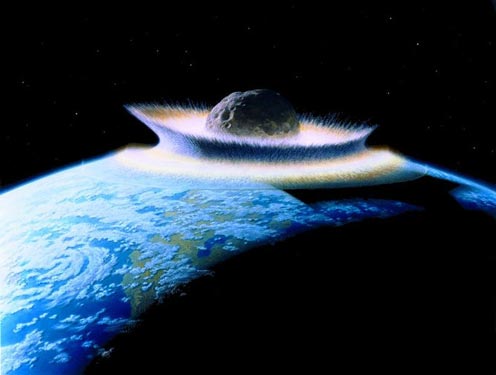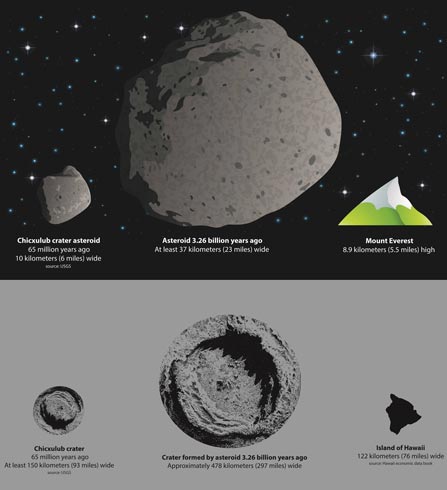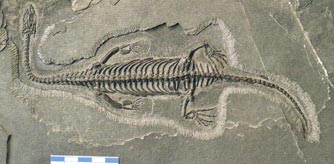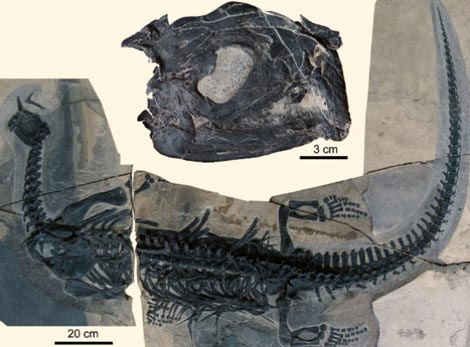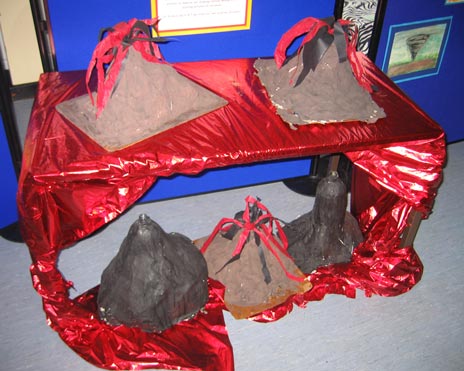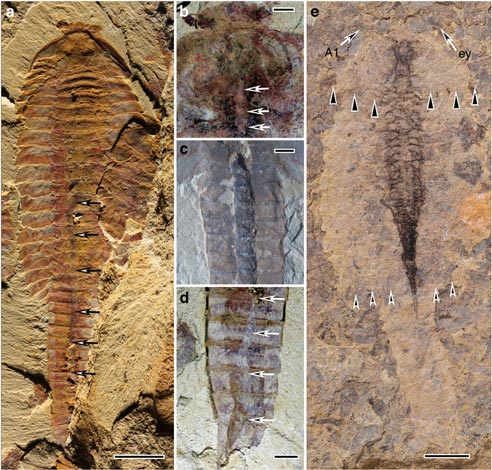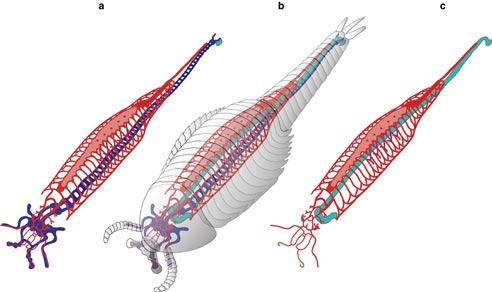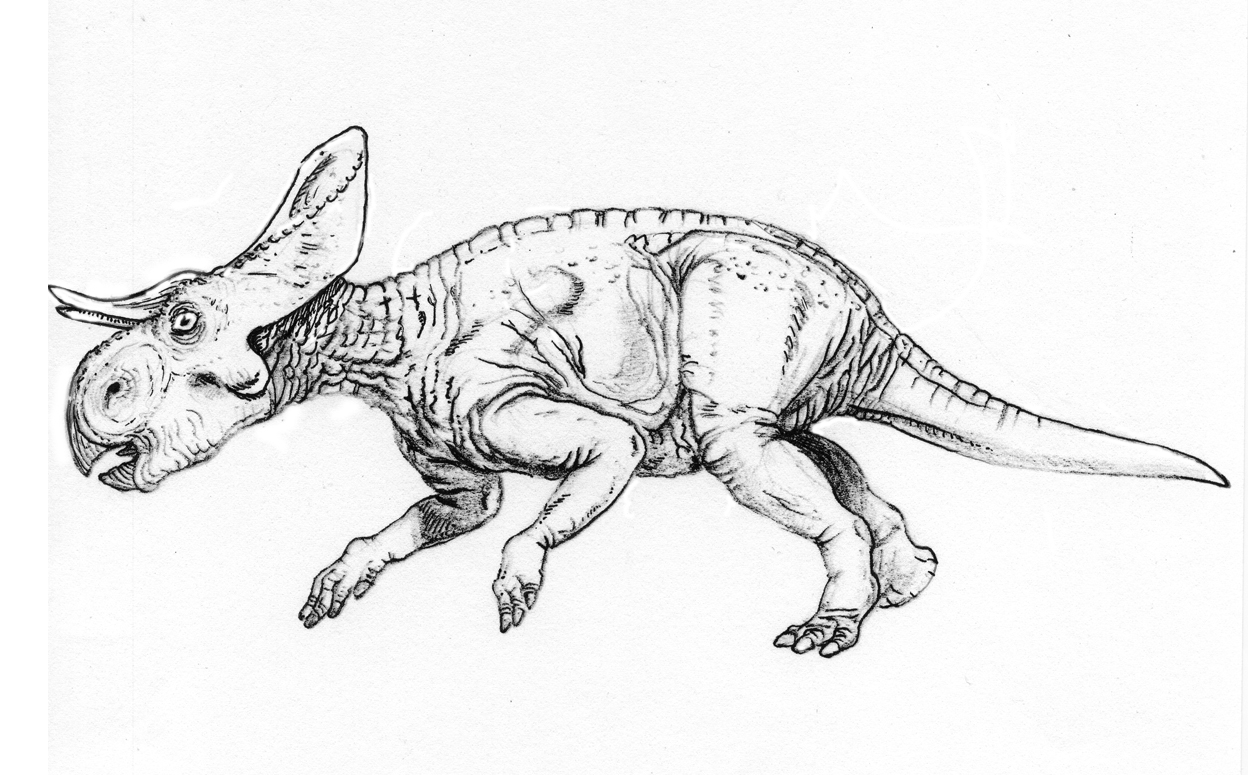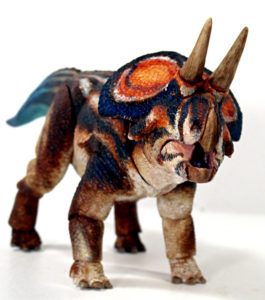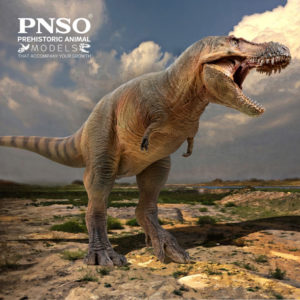The Weird and the Wonderful – Chinese Triassic Marine Reptiles
Parahupehsuchus longus – Armoured Marine Reptile with a “Corset”
As life on Earth recovered from the devastating End Permian mass extinction event which took place some 250 million years ago, it seems that a myriad of strange and bizarre vertebrates evolved to take advantage of vacant niches in ecosystems that had arisen due to the extinction of so many different types of organism. One of the strangest marine creatures known to science has just been described in the on line scientific journal PLOS One. It seems that as environments and ecosystems recovered in the Early Triassic, so marine tetrapods evolving the capability to eat other marine tetrapods came about in earnest and the first tetrapod apex predators of the sea appeared.
Marine Tetrapods
This led to the evolution of body armour and other forms of protection in smaller marine tetrapods that were now the potential prey. Step forward the bizarre Parahupehsuchus longus, around a metre long, marine reptile that evolved a bony tube that completely surrounded its body wall, like a sort of armoured corset. Just like a corset, breathing movements and body movements may have been restricted, but the primary role for this unusual pseudo carapace was probably protection against attacks from a much larger predatory marine reptile that shared P. longus’s watery world.
Parahupehsuchus longus
Back in 2011, scientists from the Wuhan Centre of China Geological Survey undertook a field excavation in Yuan’an County, Hubei Province, (east central China), to find Early Triassic marine reptile fossils. The strata in this part of China represents exposures of marine sediments laid down in a shallow tropical sea around 248 million years ago (Jialingjiang Formation). The area had been mapped and studied since the late 1950’s and a number of marine reptile genera unique to this part of the world had already been named and described. However, when Chinese scientists first studied these fossil rich deposits, the strata was believed to be younger, dated to the Anisian faunal stage of the Middle Triassic.
Triassic Marine Strata
The rocks at this location were thought to be roughly the same age as Triassic marine strata found in the provinces of Yunnan and Guizhou (south-western China). More recent studies have assigned the sediments exposed around Yuan’an County to be up to three million years older than most of the sedimentary rocks bearing marine reptile fossils in Yunnan and Guizhou. The rocks which entombed Parahupehsuchus longus date to around 248 million years ago (Olenikian faunal stage of the Lower Triassic).
This is significant because the vertebrate fossils found in Yuan’an County are much closer to the End Permian extinction event than those from south-western China, the ecosystem represented is one that is at an earlier stage of recovery from the most devastating extinction event known.
Parahupehsuchus longus (Holotype Material WGSC 26005)
Picture credit: PLOS One
In the diagram above the strange bony carapace-like structure surrounding the body of this new species of marine reptile can be clearly made out. The labels in red have been added by Everything Dinosaur to help readers gain a better understanding as to the layout of the fossil as the skull and much of the tail is missing.
Ten Marine Reptile Specimens
The research team identified more than ten marine reptile specimens, one partially complete fossil represents this new genus. Most of the marine reptile specimens discovered represented animals of around a metre in length, but one fossil suggests a marine reptile of around 4 metres in length. Although not formally described yet, the skull is robust and the teeth that of a meat-eater. It has been suggested that this reptile was the apex predator. Parahupehsuchus evolved its corset-like body to resist attacks from this much larger marine reptile.
Surprisingly, very few fish fossils have been found in the strata that contains the marine reptile fossils. This might be a reflection of fossil preservation bias, but if there were few fish species present and this may not be that surprising as something like 57% of all marine families died out at the end of the Permian, it seems that marine reptiles evolved to attack and hunt other marine reptiles. The corset of Parahupehsuchus may have evolved as a response to the predatory pressure.
The Order Hupehsuchia
Parahupehsuchus has been assigned to the Hupehsuchia Order of marine reptiles. This Order currently consists of just three genera, all of which are found in the Lower Triassic sediments of Hubei Province. The first named and described was Nanchangosaurus, then in 1972 a near complete specimen of a new type of marine reptile that had been discovered was named this was Hupehsuchus. Palaeontologists consider that Parahupehsuchus was closely related to Hupehsuchus.
Parahupehsuchus pronounced “par-rah-hoop-pay-sook-cus” means beside Hupehsuchus which refers to the taxonomic relationship between these two genera. The term Hupehsuchus is derived from Hupeh, an alternative spelling for Hubei Province and the Greek word for crocodile.
Hupehsuchus nanchangensis Fossil Material (specimen number WGSC 26004)
Picture credit: PLOS One
The more complete specimen (diagram B) above, provides scientists with clues to how Parahupehsuchus might have looked. It may have had a long narrow, toothless snout like its close relative Hupehsuchus. It was probably capable of moving around on land as well as being adapted to a marine environment and although the tail is missing in the holotype specimen it is likely that the tail was quite powerful and Parahupehsuchus propelled itself through the water with sideways movements of its tail, in a similar to modern crocodilians today.
Toothless Jaw
If indeed Parahupehsuchus had a toothless jaw, then it may have eaten soft-bodied creatures such as squid. This bizarre marine reptile remains unique amongst vertebrates for the strange configuration of its trunk.
Its body is completely surrounded by a bony tube, around fifty centimetres long and nearly seven centimetres deep. The tube is made up of overlapping ribs and gastralia (belly ribs). This tube and the presence of dermal armour on the dorsal surface of the skeleton (back) have been interpreted as defensive features to withstand the bites of larger marine reptiles. This is evidence that by the Early Triassic, ecosystems had recovered enough from the End Permian extinction event to permit the establishment of complex marine tetrapod food chains dominated by large apex vertebrate predators.
The Front Dorsal Region of Parahupehsuchus longus
Picture credit: PLOS One
The unique corset-like body protection is made up of a combination of fused true ribs, belly ribs (gastralia) and neural spines.
Key
red = dermal armour, scales and ossicles (da)
dark brown = first segment of neural spine (ns1)
dark green = second segment of neural spine (ns2)
grey = ribs (ri)
orange = lateral gastralia (lg)
white = median gastralia (mg)
green = bones of the left forelimb
arf (pink) = anterior rib facet extending from the parapophysis, dia (light brown) = diapophysis of the neural arch, para (yellow) = parapophysis main facet.
Note that ribs and gastralia overlap in a complex manner and the double rib articulation prevents rib motion. This would have made chest movements difficult for breathing and restricted the body movements to aid swimming and locomotion on land.
Although, the ribs are expanded in a similar way to that of a turtle’s shell, Parahupehsuchus is not closely related to the Chelonia (turtles, tortoises and terrapins). This might be an example of convergent evolution.
Scientists hope to find more fossils of this strange marine reptile in rocks that make up the Jialingjiang Formation and with further research they intend to build up a more detailed picture of the food chain that is represented by this Lower Triassic fossil material.
For models and replicas of marine reptiles and other creatures: PNSO Age of Dinosaurs Figures and Models.






